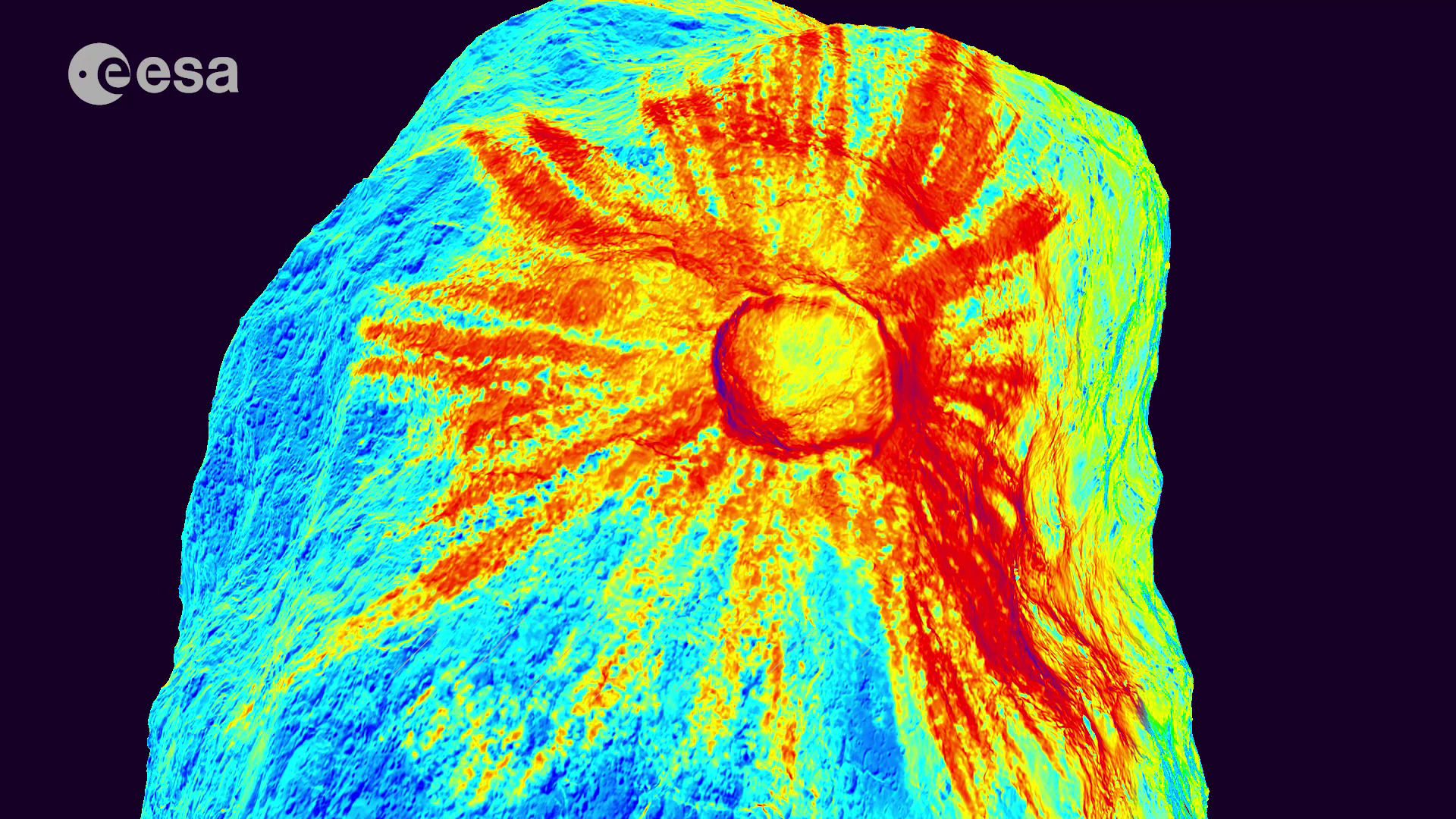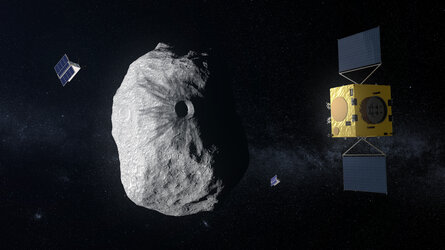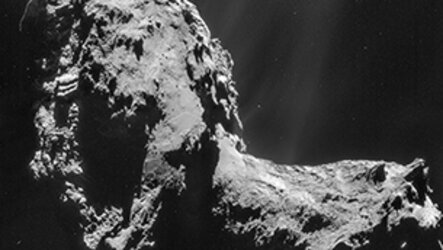ESA choosing CubeSat companions for Hera asteroid mission
As the world marvels at the hopping mini-rovers deployed on asteroid Ryugu by Japan’s Hayabusa2, ESA is due to decide on the CubeSats planned for delivery to a binary asteroid system by its proposed Hera mission.
CubeSats are nanosatellites based on standardised 10 cm-sized units. This week an ESA evaluation board decides which two ‘6-unit’ CubeSat missions will ride with the next-decade Hera mission to the Didymos asteroid system. The CubeSats will be deployed around the smaller of the two bodies for eventual landing.
Landing in a low-gravity environment is a rare event – more akin to a docking than a traditional touchdown – so the Hera team has been following Hayabusa2’s deployment closely. Famously the Philae lander of ESA’s Rosetta mission bounced off the surface of Comet 67P/Churyumov–Gerasimenko during its 2014 landing, coming down in a shady spot that drained its solar arrays and limited its lifetime.
The MINERVA mini-lander accompanying Japan’s Hayabusa-1 to asteroid Itokawa was lost in space in 2005 when Itokawa’s gravity failed to bring it down. The two MINERVA-II mini-rovers deployed last week are designed to hop across Ryugu’s surface because traditional wheeled motion would cast them up into space again.

The MINERVA-II mini-rovers weigh in at about 1.1 kg each, compared to Philae’s 100 kg. Hayabusa2 is planned to deliver a larger 10kg Mascot lander on 3 October – built by the DLR German Aerospace Center, responsible for Philae, in cooperation with the French space agency CNES – which will similarly be able to hop. By comparison Hera’s 6-unit CubeSats will be intermediate in size, around 6 kg each.
“The CubeSats we are selecting have a different operating concept, intended to fly close above their asteroid with their own propulsion systems,” explains ESA space scientist and Rosetta veteran Michael Küppers, today serving as Hera project scientist.
“At just 160 m across, the smaller component of the Didymos binary asteroid is too small to truly orbit around, but instead these CubeSats will fly Rosetta-like hyperbolic arcs, maintained by manoeuvres every few days, hopefully culminating in landings.

Hera is planned to be humankind’s first mission to a binary asteroid system, with multiple goals. As well as testing technologies in deep space and gathering bonus science, Hera would also be Europe’s contribution to an international planetary defence effort: it would survey the crater and other effects on the asteroid – plus its resulting orbital deviation – due to the collision of a NASA probe, called DART.
‘It’s extremely helpful scientifically when asteroid missions get to touch the surface of their target,” comments CNRS Director of Research Patrick Michel of France’s Côte d'Azur Observatory. As well as serving as a co-investigator and interdisciplinary scientist on Hayabusa2’s science team he is also Hera’s lead scientist.
“With Hera this will already have been done by the DART impact: we’ll have a crater for which we have the initial conditions of its formation, offering us a documented impact experiment at actual asteroid scale. This will enable us to assess the effectiveness of asteroid deflection as a planetary defence technique and allow us to infer many things about collisions more generally and their fundamental role in all the stages of the history of the Solar System.

“In addition Hera’s CubeSats will give us additional close-up views and information, risking much closer approaches than their parent spacecraft before eventually landing.”
“The two proposals chosen to move to definition stage this week would be Europe’s first CubeSats to fly beyond Earth orbit,” explains Hera manager Ian Carnelli.
“CubeSats give an excellent opportunity for some Member States to oversee deep space missions for the first time. Hera’s CubeSats will let us investigate a novel intersatellite communications link technology and gather invaluable low gravity operational experience by flying very close to a small body, as well as crucial planetary defence findings and bonus science data.”
The two winning CubeSats will be announced soon.


Access the video














 Germany
Germany
 Austria
Austria
 Belgium
Belgium
 Denmark
Denmark
 Spain
Spain
 Estonia
Estonia
 Finland
Finland
 France
France
 Greece
Greece
 Hungary
Hungary
 Ireland
Ireland
 Italy
Italy
 Luxembourg
Luxembourg
 Norway
Norway
 The Netherlands
The Netherlands
 Poland
Poland
 Portugal
Portugal
 Czechia
Czechia
 Romania
Romania
 United Kingdom
United Kingdom
 Slovenia
Slovenia
 Sweden
Sweden
 Switzerland
Switzerland































